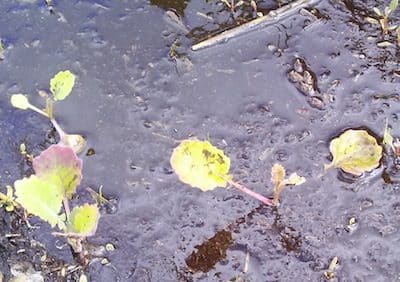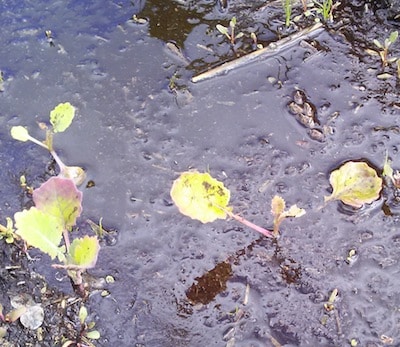Heavy rains can increase nitrogen and sulphur leaching in lighter soils, and increase denitrification in heavier soils. While very good soil moisture conditions may increase canola yield potential, those rains may have depleted the nitrogen reserves somewhat. Top dressing is an option.
Whether top dressing makes financial sense may depend on the conditions of the crop and how much nitrogen was available at the start of the season. If plants are strong and the crop looks good, top dress may provide a return on investment. Before applying, check what rates were applied at seeding or before. If rates were more than adequate for a high-yielding crop, some nitrogen could be lost to leaching or denitrification and not hurt yield potential too much. The healthy crop may also access leached nitrogen lower in the soil profile later in the season. But if rates were reduced in response to rising costs or lower yield outlooks at seeding time, this crop might benefit more from a top dress — especially if it looks in good shape right now.
How much nitrogen could be lost to denitrification and leaching? Growers can expect to see some nitrogen loss from extended heavy rains, probably in the range of 20-50%. Worst areas of the field — the low spots — could lose more of the available nitrogen. However, these saturated areas will have thinned crop anyway, meaning there may still be enough N to feed the few plants that remain.
Sandier soil will have a lot more leaching. Leached N is normally accessible as roots develop, but canola plants with shallow rooting as a result of ample spring moisture may not reach as far as expected. Nitrogen can wick back up but it need roots to grow down and meet it. The only way roots will do that is if soils dry out.
Before top dressing, wait to see how the crop recovers from saturated soils before investing any more in fertilizer. Don’t do anything while soils are still wet — roots cannot take up nutrient when soils are saturated. Applying nutrient direct to leaves doesn’t help. Most foliar-applied nitrogen is washed off and then goes into the root zone. Uptake through the leaves is minimal.

